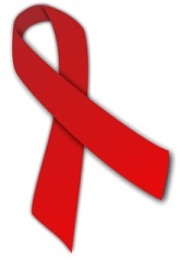Introduction

AIDS in Africa is a serious problem, with millions of people contracting the infection and succumbing to death each year. The continent is beset with problems with an estimated 1.8 million of people dying of the virus and related infection in 2009, down from 2.1 million in 2004. Governments failed to respond to the crisis or acknowledge the connection between HIV and AIDS in Africa.
History

In fact, the first incidence of HIV and AIDS was recorded in the continent and confirmed through the 1959 results of the blood test of a man who died of unknown causes, later identified as caused by HIV. There are other factors to consider why AIDS in Africa has reached unprecedented levels in the 1990s. The economic factor was one, with people not being able to afford medical care, let alone antiretrovirals that would bring the rates of HIV infection down. There were not enough facilities or health care workers as qualified people began immigrating to developed countries to search for greener pastures. Information campaigns were also not prevalent, especially in rural areas and remote, inaccessible regions. Poverty, social behavior (multiplicity of sexual partners), and unprotected/paid sex also contributed to the epidemics. As a result, deaths caused by HIV and AIDS in Africa were high. Mother to child transmission reached disproportionate levels with maternal and child mortality rates increasing significantly.
Features

Nonetheless, acknowledgment of the problem is the first step to assessing AIDS in the continent. Based on the 2010 Global Report of the UNAIDS, the HIV and AIDS situation in Africa has improved significantly. On a global scale, 34% of HIV-infected people live in the 10 countries in southern Africa while 31% of new cases occurred in the region, 34% of deaths caused by AIDS and related illnesses were from the southern African region. The good news is, around 22 countries in sub-Saharan Africa reduced HIV incidence by more than 25%. Countries such as Ethiopia, South Africa, Zimbabwe, Zambia, and Nigeria are showing lower rates of HIV infection. In East Africa, the HIV epidemic is stable since 2000 with incidence falling steadily in Kenya, Uganda, and Rwanda. In West and Central Africa, the infection rate is low estimated at 2% or less in 12 countries. South Africa is the most heavily affected when it comes to HIV infection with an estimated 11.3 million living with HIV in 2009. The positive development of HIV and AIDS in the continent is due to concerted efforts by governments, NGOs, medical researches, and the international donor community. The increasing availability of antiretrovirals is also another important factor curbing death rates; 18% in southern Africa. Botswana has nearly 90% antiretrovirals coverage and it successfully reduced deaths due to HIV and AIDS in the country by 50%. If this trend is sustained, 130,000 deaths could be prevented by 2012 (2010 Global Report, UNAIDS). There are still many impediments to the implementation of HIV and AIDS programs such as unprotected sex and having multiple partners. Paid sex is also another factor to consider as well as the implications of sex by men with men and injecting drugs. Limited infrastructure in rural areas also makes it difficult to reach those who are infected, administer antiretrovirals, and monitor progress. Hopefully, these barriers in the quest for reducing overall mortality in the continent due to the virus in the last decades will be removed.
Tips and comments
Mother to infant transmission of the HIV virus is a critical concern, but the infection rates have improved significantly in the last 10 years.